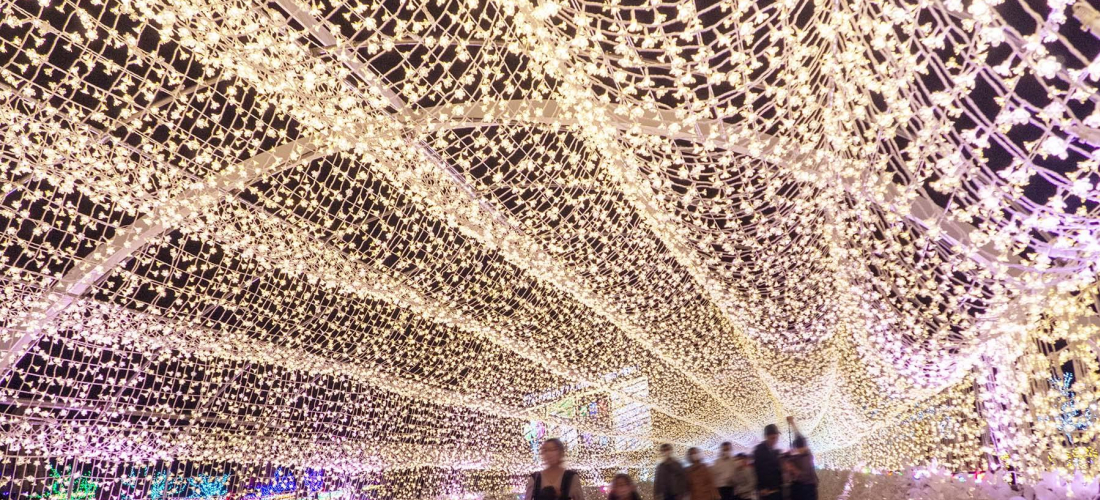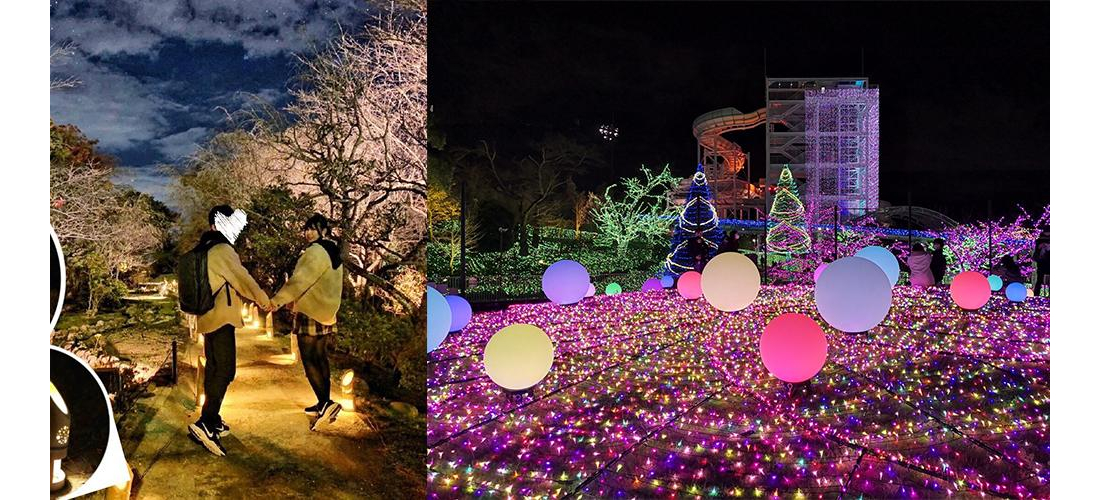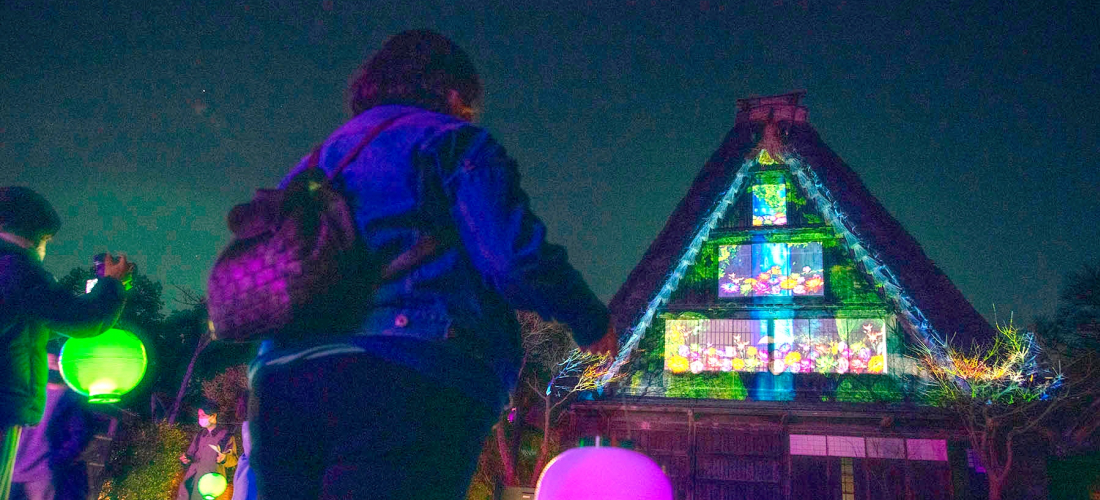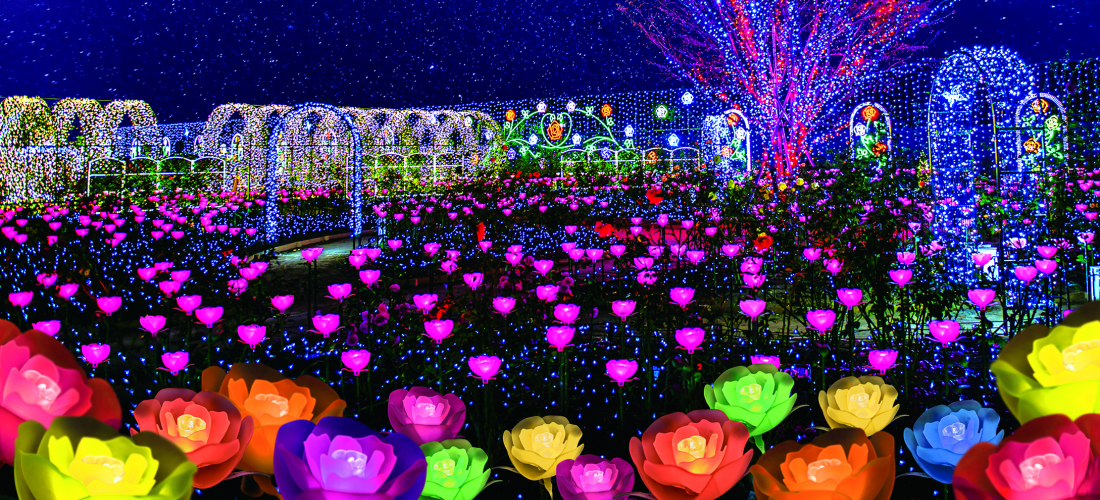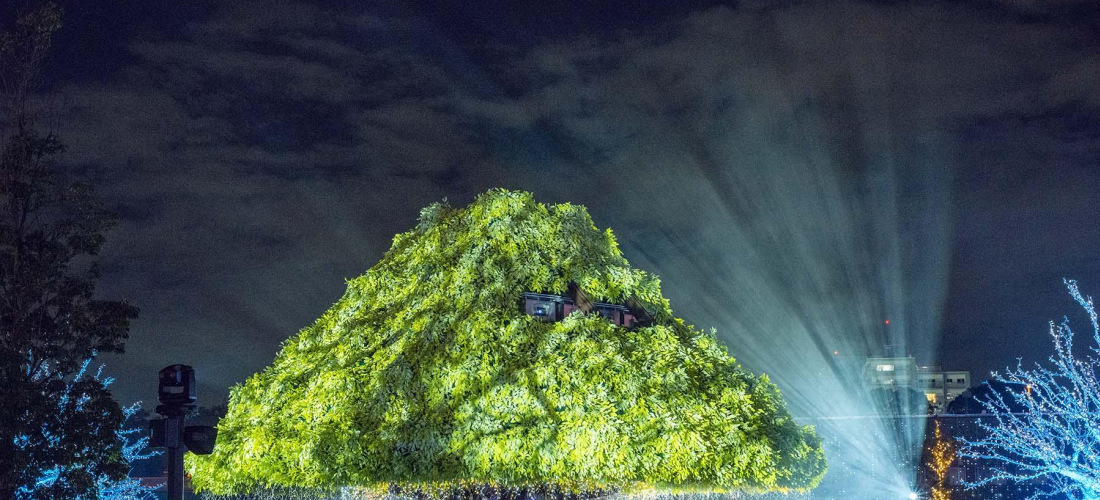
CONTENTS
Since 2020, for two years running, Tokyo Mega Illumination has taken first place on the “Must-See Japanese Illumination Event” ranking. So just what kinds of new lights, shows, horse attractions, and special campaigns does Tokyo Mega Illumination have in store for us this year? Take a look and see what’s waiting in 2022!
Spend Your Winter with the Horses, Under the Sparkling Lights
Held yearly at the Oi Racecourse, Tokyo Mega Illumination has been rising in popularity in recent years. Not only is the huge illuminated park area with its many light shows located conveniently close to Haneda Airport, but there are plenty of romantic spots full of twinkling lights to make it a great winter date spot for young couples, and the exciting atmosphere (plus opportunities to spend time with real horses!) make the event and all its attractions popular for hanging out with friends, and for families with members young and old. This year too, Tokyo Mega Illumination will be showing off their aurora-borealis-style lights and fountain lit up in seven different colors as part of their "Mega Illumination Show ~Twinkle Fountain and Aurora Borealis~," alongside the classic "Edo Cherry Blossom Tunnel," plus some new horse-themed events and photo spots in their extra Instagrammable photoshoot zone. We'll be showing you some spots that you won't want to miss this winter, and sharing info on limited-time special offers for the event as well, so check out all the details below!
① An Upgraded Mega Illumination Show ~Twinkle Fountain and Aurora Borealis~
The Mega Illumination Show, a star attraction at Oi Racecourse's Tokyo Mega Illumination, is a colorful dance between light and water, with a rainbow water dance light show leaping along to the music, and light playing on the trees of the Aurora Forest. This year, both the special lighting effects and the music have been updated, and as a crossover collaboration with the popular Japanese mobile game Uma Musume, every hour on the hour the show will now feature the exciting Uma Musume theme song "Yume o Kakeru!"
Fans of Uma Musume shouldn't miss Tokyo Mega Illumination's special collaboration goods, sweets, and even announcements!
② It’s Not Just a Light Show – See Cute Horses Up Close, Too!
Part of what makes the Tokyo Mega Illumination event at Oi Racecourse so unique is the special points of fusion between light displays and their horse racing theme. Visitors can take pictures with miniature horses in cute costumes, and even make advance reservations for pony rides! (Pony rides only on weekends and holidays; for elementary school students and younger, under 50kg/110lb; participation limited; reservations and additional fee required.) On weekends and holiday race days starting in November, the handsome lead ponies (guides and companions for the race horses) also make an appearance, and you can see the horses strut their stuff alongside the Rainbow Dance light show. Plus, the park has all sorts of new photo spots with horses and carriages, so there's even more horsey fun to enjoy. You won't find many opportunities like this in Tokyo, so don't miss this chance to spend some time with the horses!
If you're all excited to make some new horse friends, you can learn more about them on the official website. If you read the horses' profiles before arriving at the racecourse, you might find yourself making a deeper connection when you meet them in person!
*Find all the horse-related event details on the official website.
③ Twinkle Tunnel – Like a Dream of Digital Projection Art
Tokyo Mega Illumination is divided into two main zones, the Twinkle Area and the Japanese Glitter Area, and connecting those two parts of the park is the Twinkle Tunnel, which has long been a favorite photo spot. This year, the tunnel is dreamier than ever thanks to the addition of new interactive digital projection art throughout the space. This particular attraction was a big hit with the Japankuru team!
④ Expansive “Demon Slayer” Wisterias & Romantic Edo Sakura Nights
In any discussion of this popular Tokyo illumination event, it would be hard not to mention the jaw-dropping 100-meter Edo Cherry Blossom Tunnel found at the Oi Racecourse every year. The inside of the tunnel is entirely covered in little lights in the shape of cherry blossoms, adding a little romantic ambience whether you walk the length or just admire it from the outside.
One slightly more recent addition at Tokyo Mega Illumination is in the Nighttime Wisteria Pergola, which has expanded into standard and Japanese-style areas, each filled with mysteriously enticing "flowers" hanging down from above. Wisterias are a popular spring flower in Japan, but you don't have to be disappointed about missing them throughout the colder months – these wisteria light displays are quite beautiful, too!
⑤ Enjoy the Toys and Treats!
Taking pictures all night long is a pretty good way to enjoy a winter illumination in Japan, but so is trying some tasty snacks! At Tokyo Mega Illumination you can try Japanese stews and horseshoe churros – a racecourse classic – plus some special light-up treats too, like color-changing lightbulb drinks and light-up candy. They look as good as they taste, so you can take pictures with them and then chow down. There are some fan-favorite horse and horseshoe-shaped LED charms this year, too!
Aside from the kinds of snacks that work as photoshoot props, you might also want to give yourself a chance to sit down and enjoy the matcha tiramisu offered at Cafe Nagomi. With a light sweetness and the perfect touch of bitter matcha powder, it's a slightly more sophisticated dessert choice at the racecourse.
⑥ Don’t Miss Out on the Special Deals and Events
To start this year's winter illumination season with a bang, Tokyo Mega Illumination is offering some special deals, like campaigns just for foreign visitors, and joint tickets for discounts on other destinations like Tokyo Tower and Shinagawa Aquarium.
▷ Free entry just for foreigners!
This year too, Tokyo Mega Illumination is offering free entry for foreigners from the 5th to the 13th of November 2022. Bring your non-Japanese passport or your residence card to the entrance, and your group of up to five people can enjoy the illumination for free! Find all the details on the official campaign page.
*Up to 200 groups per day, first come first serve.
▷ Joint Tickets with Tokyo Tower & Shinagawa Aquarium – Half-Day Sightseeing Plans
Located in Tokyo's Shinagawa Ward, Oi Racecourse is teaming up with two other nearby sightseeing destinations to offer special combo ticket deals to enjoy both the local attractions and some nighttime illumination. If you're interested in visiting Tokyo Tower or you love aquariums, you'll definitely want to check out these deals!
Tokyo Tower × Tokyo Mega Illumination Joint Ticket
Sales Period: Oct. 8, 2022 (Sat) ~ Dec. 31, 2022 (Sat)
Validity Period: Oct. 15, 2022 (Sat) ~ Jan. 9, 2023 (Mon) *Not including holidays.
Usage: Present ticket once at both Tokyo Tower and Tokyo Mega Illumination, during period of validity.
Price: adults 1,700 yen, high school students 1,200 yen, elementary/middle school students 900 yen
Online Reservations|Official Website
Shinagawa Aquarium × Tokyo Mega Illumination Joint Ticket
Sales Period: Oct. 8, 2022 (Sat) ~ Dec. 31, 2022 (Sat)
Validity Period: Oct. 15, 2022 (Sat) ~ Jan. 9, 2023 (Mon) *Not including holidays.
Usage: Present ticket once at both Shinagawa Aquarium and Tokyo Mega Illumination, during period of validity.
Price: adults 1,800 yen, high school students 1,400 yen, elementary/middle school students 800 yen
Online Reservations|Official Website
*Joint tickets cannot be used on December 24th or 25th.
On top of all the fun of a winter illumination, and all the chances to meet the Oi Racecourse horses, Tokyo Mega Illumination also puts together some pretty cool crossover collaborations each year, so check out all the details on the official website!
Tokyo Mega Illumination 2022~2023
Event Period: Oct. 15, 2022 (Sat) ~ Jan. 9, 2023 (Mon) *Not including holidays.
See the full schedule on the official website!
Location: Oi Racecourse, 2-1-2 Katsushima, Shinagawa City, Tokyo
Hours: 16:30 – 21:00 (final admission at 20:00)
Transportation: 2 min. walk from the Monorail Oikeibajo-Mae Station
Admission Fees:
Standard Advance Tickets: adults (18+) 800 yen, children 400 yen
Standard Day-of Tickets: adults (18+) 1,000 yen, children 500 yen
Nov. Weekend/Holiday Advance Tickets: adults (18+) 1,000 yen, children 500 yen
Nov. Weekend/Holiday Day-of Tickets: adults (18+) 1,200 yen, children 600 yen
Dec. Weekend/Holiday Advance Tickets: adults (18+) 1,200 yen, children 600 yen
Dec. Weekend/Holiday Day-of Tickets: adults (18+) 1,500 yen, children 800 yen
Official Website | Twitter | IG | FB
Details
NAME:Tokyo Mega Illumination (東京メガイルミネーション)
ACCESS:Oikeibajo-Mae Station (monorail)
COMMENT
FEATURED MEDIA
VIEW MOREMAP OF JAPAN
SEARCH BY REGION

LATEST
VIEW MOREEVENT CALENDAR
VIEW MOREMOST POPULAR
 Tokyo Winter Recommendation: Don’t Miss Tokyo Mega Illumination, Japan’s #1 Light Show
Tokyo Winter Recommendation: Don’t Miss Tokyo Mega Illumination, Japan’s #1 Light Show ป้ายยาสินค้าน่าซื้อในร้านขายยาญี่ปุ่น | KOWA ผลิตภัณฑ์เพื่อสุขภาพสำหรับคนยุคใหม่
ป้ายยาสินค้าน่าซื้อในร้านขายยาญี่ปุ่น | KOWA ผลิตภัณฑ์เพื่อสุขภาพสำหรับคนยุคใหม่ Okinawa Family Road Trip: Japanese Glasses Shopping at San-A Urasoe West Coast PARCO CITY, Discount Coupons, & Okinawa Sightseeing with JINS
Okinawa Family Road Trip: Japanese Glasses Shopping at San-A Urasoe West Coast PARCO CITY, Discount Coupons, & Okinawa Sightseeing with JINS

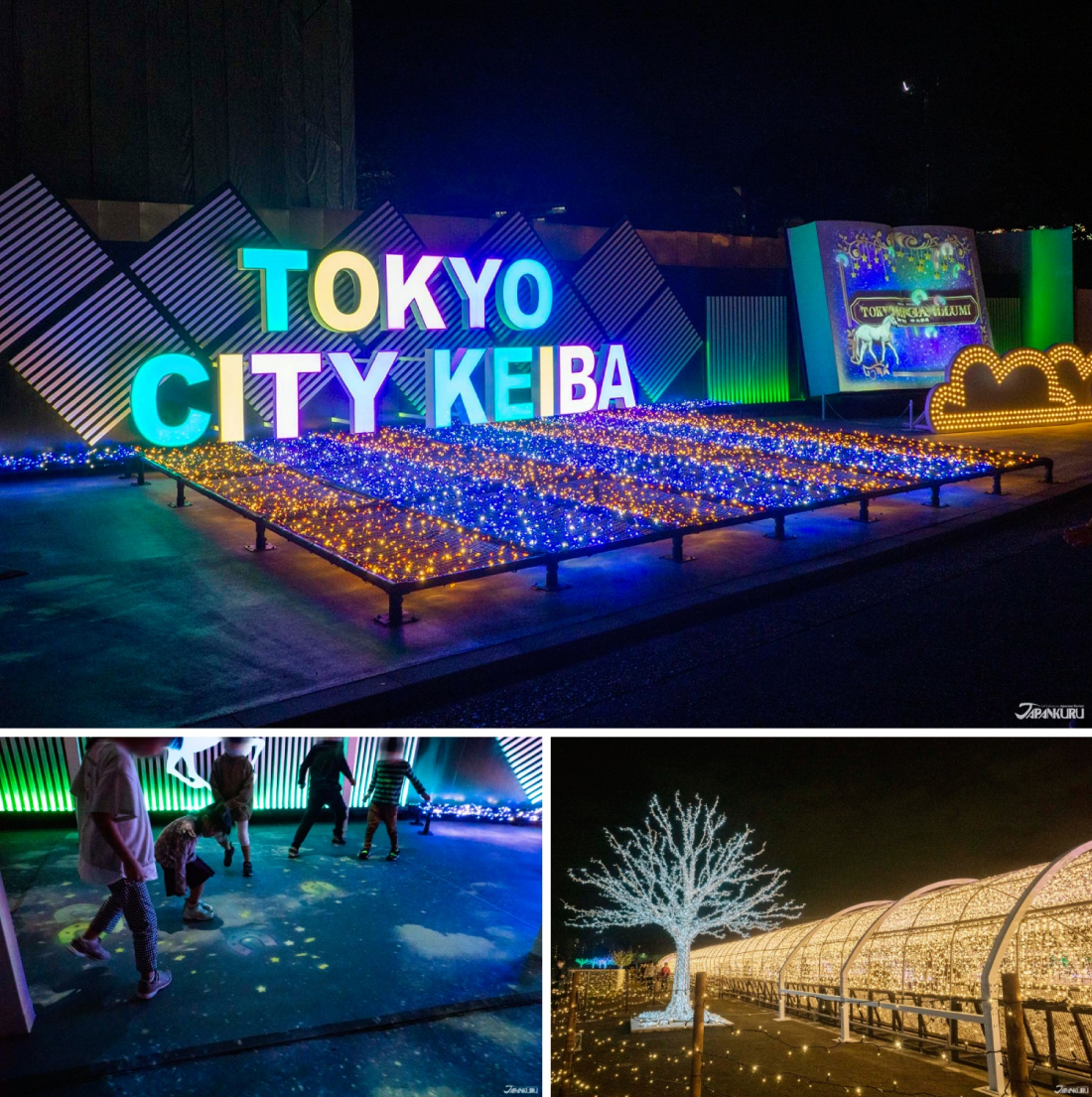






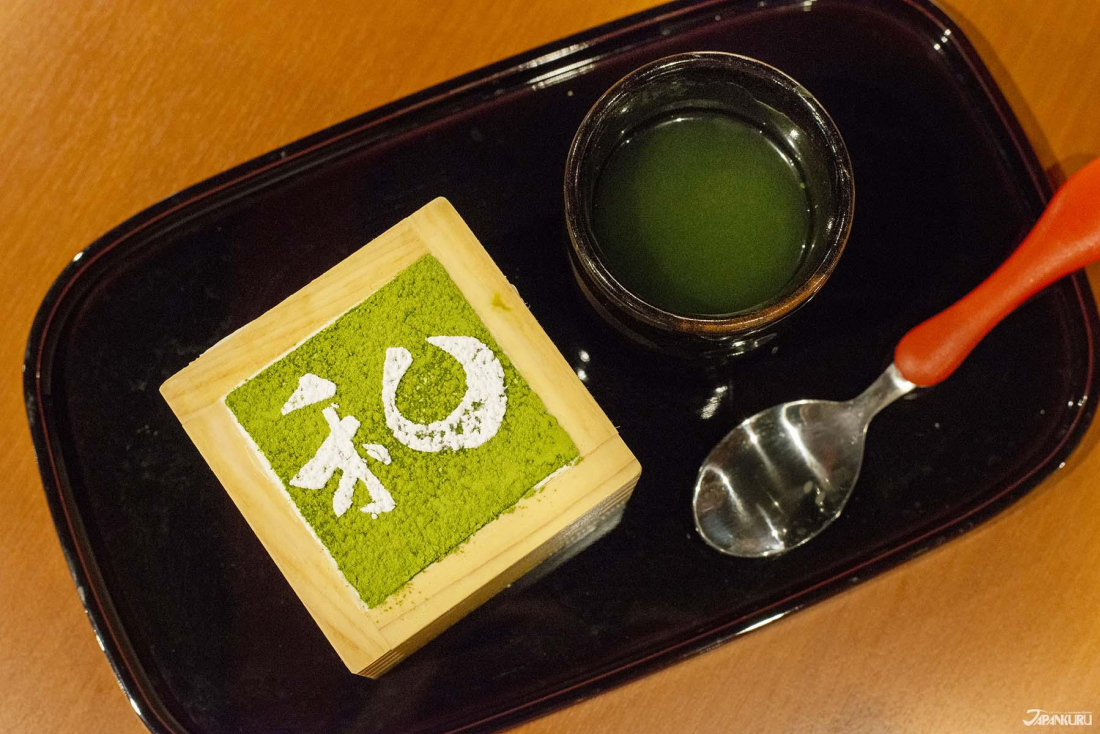


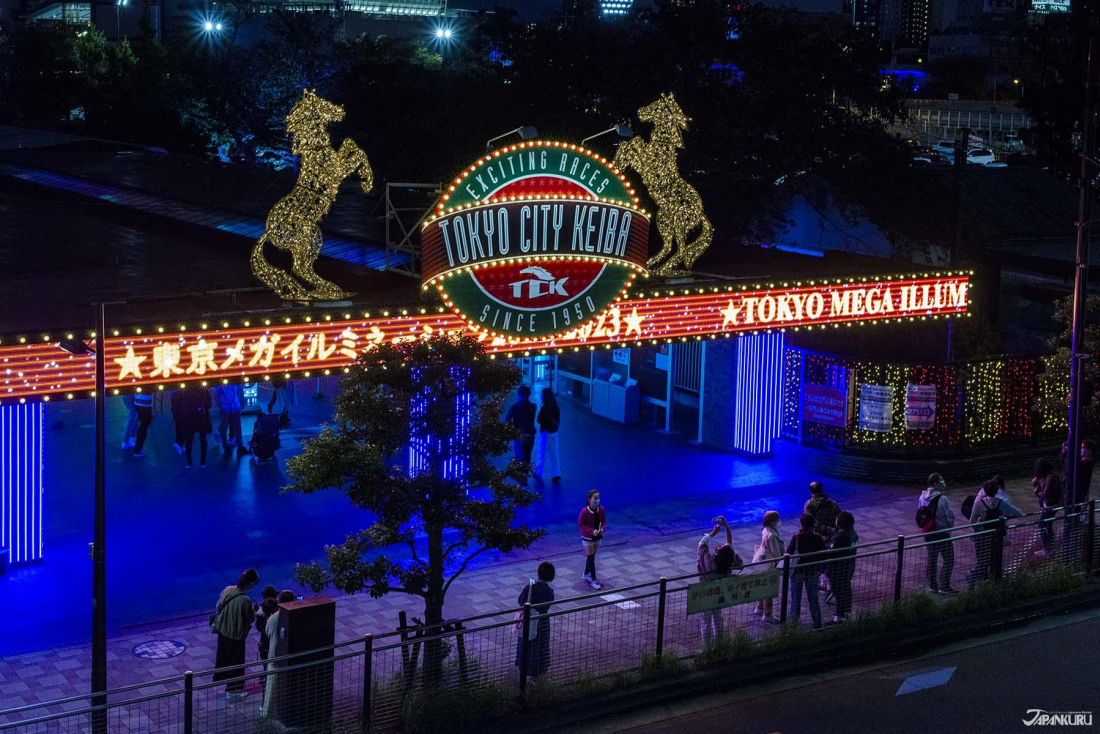




 >> Find out more at Japankuru.com! (link in bio)
#
>> Find out more at Japankuru.com! (link in bio)
#





 The Robot Restaurant is gone, but the Samurai Restaurant is here to take its place. Check it out, and don't forget your coupon!
The Robot Restaurant is gone, but the Samurai Restaurant is here to take its place. Check it out, and don't forget your coupon!
 신주쿠의 명소 로봇 레스토랑이 사무라이 레스토랑으로 부활! 절찬 쿠폰 발급중
신주쿠의 명소 로봇 레스토랑이 사무라이 레스토랑으로 부활! 절찬 쿠폰 발급중
 18歲以上才能入場的歌舞秀,和你想的不一樣!拿好優惠券去看看~
#tokyo #shinjuku #samurairestaurant #robotrestaurant #tokyotrip #도쿄여행 #신주쿠 #사무라이레스토랑 #이색체험 #할인이벤트 #歌舞伎町 #東京景點 #武士餐廳 #日本表演 #日本文化體驗 #japankuru #japantrip #japantravel #japanlovers #japan_of_insta
18歲以上才能入場的歌舞秀,和你想的不一樣!拿好優惠券去看看~
#tokyo #shinjuku #samurairestaurant #robotrestaurant #tokyotrip #도쿄여행 #신주쿠 #사무라이레스토랑 #이색체험 #할인이벤트 #歌舞伎町 #東京景點 #武士餐廳 #日本表演 #日本文化體驗 #japankuru #japantrip #japantravel #japanlovers #japan_of_insta
 코지마 x 빅 카메라 쿠폰으로 일본 가전 제품 쇼핑하기
#pr #japankuru #japanshopping #kojima #biccamera #japaneseskincare #yaman #dji #osmopocket3 #skincaredevice #日本購物 #美容儀 #相機 #雅萌 #日本家電 #일본여행 #면세 #여행꿀팁 #일본쇼핑리스트 #쿠폰 #일본쇼핑 #일본브랜드 #할인 #코지마 #빅카메라 #japankurucoupon
코지마 x 빅 카메라 쿠폰으로 일본 가전 제품 쇼핑하기
#pr #japankuru #japanshopping #kojima #biccamera #japaneseskincare #yaman #dji #osmopocket3 #skincaredevice #日本購物 #美容儀 #相機 #雅萌 #日本家電 #일본여행 #면세 #여행꿀팁 #일본쇼핑리스트 #쿠폰 #일본쇼핑 #일본브랜드 #할인 #코지마 #빅카메라 #japankurucoupon































 Oita Hello Kitty Airport
Oita Hello Kitty Airport  Lands April 13th
Lands April 13th









